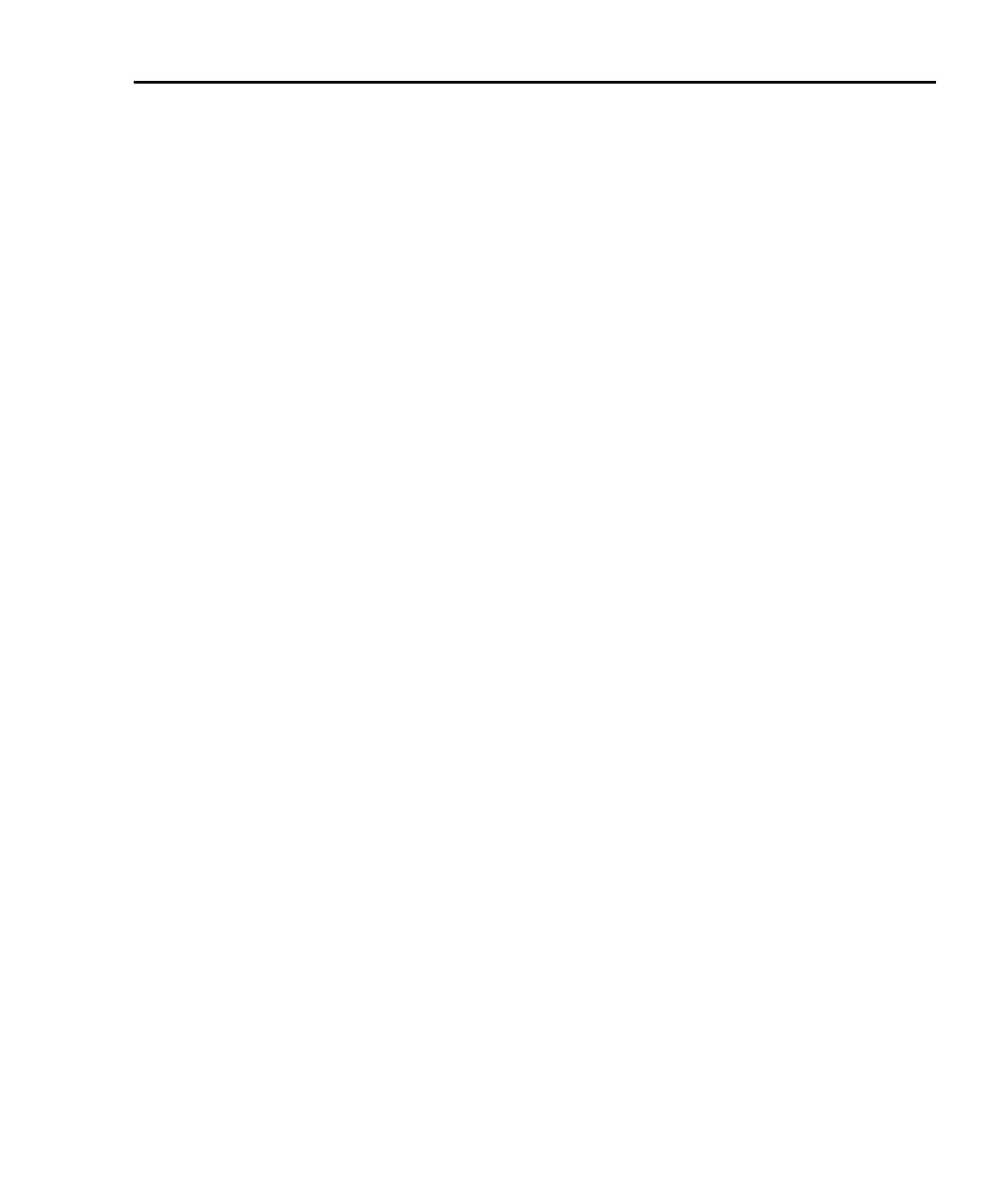Model 2700 Multimeter/Switch System User’s Manual Limits and Digital I/O 9-3
Overflow readings — A reading that exceeds the present measurement range causes the
“OVRFLW” message to be displayed. The “IN,” “1,” and “2” messages are not displayed
while in the overflow condition. The HIGH annunciator will turn on to indicate an out of
limits reading.
The LOW annunciator is not used for an overflow reading. An overflow reading is
interpreted by the Model 2700 as a positive reading, even if the input signal is negative.
That is the reason why the LOW annunciator does not turn on.
NOTE When a switching module channel is closed, the message “I” replaces the
message “IN” to indicate that the reading is inside both Limit 1 and Limit 2.
For limit test readings that get stored in the buffer, the limits status indicators
are displayed for each recalled reading.
When a limit test reading is returned using remote programming, limit test status
can be included with the reading. See
Section 14, “FORMat commands” for
details.
When using Limits with Ratio or Ch Avg the limit values will be compared the
result of the calculation and not to the individual channels.
Beeper — A beeper is also available for limit testing. There are three beeper options:
NEVER, OUTSIDE, and INSIDE. These options are explained as follows:
NEVER — With this option, the beeper is disabled.
OUTSIDE — With this option, the beeper sounds when the reading is outside (HIGH or
LOW) of Limit 1 or Limit 2. Again referring to
Figure 9-1, a +1.5V reading is outside
(HIGH) Limit 1, and the beeper will sound.
INSIDE — With this option, the beeper will sound when the reading is inside Limit 1
and/or Limit 2. If the reading is inside Limit 1, the beeper will sound raspy. If the reading
is outside Limit 1, but inside Limit 2, the beeper will sound at a lower pitch. The beeper
will not sound for readings outside both limits. For the limits shown in
Figure 9-1, a 0.5V
reading will sound the beeper at its normal pitch, a 1.5V reading will sound the beeper at a
lower pitch, and for a 2.5V reading, the beeper will not sound.
Tips to use Limit 2 test
Limits 1 < Limits 2 — When the set limits for Limit 1 are less than the limits for Limit 2
(i.e.,
Figure 9-1), use the INSIDE beeper. As previously explained, when the reading is
between Limit 1 and Limit 2, the beeper will sound raspy.
Limits 1 > Limits 2 — When the set limits for Limit 1 are greater than the limits for
Limit
2, use the OUTSIDE beeper. When the reading is between Limit 1 and Limit 2, the
beeper will sound raspy.

